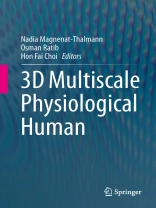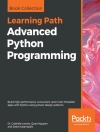3D Multiscale Physiological Human aims to promote scientific exchange by bringing together overviews and examples of recent scientific and technological advancements across a wide range of research disciplines. As a result, the variety in methodologies and knowledge paradigms are contrasted, revealing potential gaps and opportunities for integration. Chapters have been contributed by selected authors in the relevant domains of tissue engineering, medical image acquisition and processing, visualization, modeling, computer aided diagnosis and knowledge management. The multi-scale and multi-disciplinary research aspects of articulations in humans are highlighted, with a particular emphasis on medical diagnosis and treatment of musculoskeletal diseases and related disorders.
The need for multi-scale modalities and multi-disciplinary research is an emerging paradigm in the search for a better biological and medical understanding of the human musculoskeletal system. This is particularly motivated by the increasing socio-economic burden of disability and musculoskeletal diseases, especially in the increasing population of elderly people. Human movement is generated through a complex web of interactions between embedded physiological systems on different spatiotemporal scales, ranging from the molecular to the organ level. Much research is dedicated to the understanding of each of these systems, using methods and modalities tailored for each scale. Nevertheless, combining knowledge from different perspectives opens new venues of scientific thinking and stimulates innovation. Integration of this mosaic of multifaceted data across multiple scales and modalities requires further exploration of methods in simulations and visualization to obtain a comprehensive synthesis. However, this integrative approach cannot be achieved without a broad appreciation for the multiple research disciplines involved.
Tabla de materias
Preface.- Part I – Introduction .- Towards Effective Diagnosis and Prediction via 3D Patient Model – A Complete Research Plan.- Part II – Cell and Tissue Engineering .- Tissue Engineering and Regenerative Medicine Strategies for the Treatment of Osteochondral Lesions.- Part III – Imaging and Visualization .- Hybrid Imaging: From Anatomy to Function.- Deformable Models in Medical Image Segmentation.- Visualization and User Interaction Methods for Multiscale Biomedical Data.- Part IV – Simulation and Articulations .- Modeling and Simulating Virtual Anatomical Humans.- Clinical Gait Analysis and Musculoskeletal Modeling.- Contact Modeling and Collision Detection in Human Joints.- Combined Motions of the Shoulder Joint Complex for Model-based Simulation: Modeling of the Shoulder Rhythm (Sh Rm).- A Biomechanical Approach for Dynamic Hip Joint Analysis.- Coupled Biomechanical Modeling of the Face, Jaw, Skull, Tongue, and Hyoid Bone.- Part V – Medical Analysis .- Computer Aided Diagnosis (CAD): State of the Art and Application to Musculoskeletal Diseases.- Accessing and Representing Knowledge in the Medical Field: Visual and Lexical Modalities.












